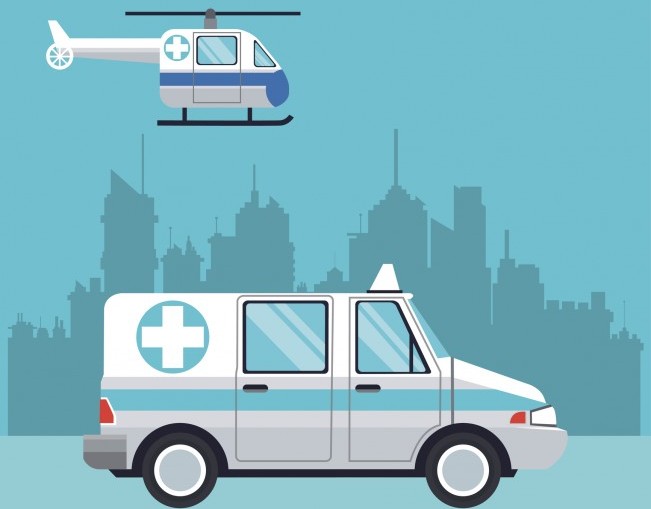Expanding Air Ambulance Service May Help Payers Control Costs
Adding air ambulance service coverage may help healthcare payers control costs and increase patient satisfaction.

Source: Thinkstock
- Expanding air ambulance benefits may help payers lower beneficiary premiums and help beneficiaries avoid several thousand dollars in out-of-pocket healthcare spending.
An air ambulance costs between $12,000 to $25,000 per flight to account for the initial price of an aircraft ($6 million) along with medical equipment and 24-7 medical personnel, the National Association of Insurance Commissioners said in an overview about the air ambulance industry.
Consumers have limited legal protections from high air ambulance costs because air ambulances are not regulated under the ACA, NAIC said. Beneficiaries without air ambulance coverage may be unaware of their costs or limited to services that could save their lives.
“Over the past decade, many states have reported issues with air ambulance providers not affiliated with any hospital or insurance carrier,” NAIC added. “This leaves patients in some areas with no in-network choices for life-saving care. Unlike air ambulance services, traditional ground ambulance services are regulated under the ACA as well as any applicable state laws.”
Providing air ambulance coverage could help payers protect beneficiaries from healthcare costs associated with air ambulance prices.
BCBS of Tennessee recently announced the addition of PHI Air Medical and Hospital Wing to their commercial provider networks after air ambulance transports cost the payer $50 million for 2,000 BCBS members requiring air ambulances.
Larry Nall, BlueCross senior vice president of provider network management praised the additions of both PHI Air and Hospital Wing as a way to lower costs for beneficiaries.
“One of our most important roles is advocating for quality care and lower costs on behalf of our members,” Nall said. “Negotiated savings help slow the growth of premium increases and lower costs for our customers. We are pleased that PHI Air Medical and Hospital Wing has joined our efforts to provide cost stability and savings for the members we serve.”
The BCBS addition of Air Medical and Hospital Wing extends air ambulance networks to 65 bases across the US and adds five local bases in West Tennessee and the Mid-South region.
Air ambulance consumer protection has also gained ground through proposed bipartisan legislation.
The Association of Air Medical Services (AAMS) supported a bill that would help increase affordable air ambulance access for patients.
H.R. 3378 / S. 2121, or the Ensuring Access to Air Ambulance Services Act, has bipartisan sponsorship in both the House and Senate. The bill would add cost transparency standards for air ambulance companies.
The bill also aims to preserve access to trauma centers for individuals who need these air ambulances that are an hour or further away from healthcare facilities and would create financial incentives for high performing air medical transport services.
The legislation would also direct Medicare to fund these transports at or near the cost of service.
“The air medical industry is facing an unsustainable future. Operating costs are rising, the population is aging, and hospitals are closing, especially in rural areas,” said Rick Sherlock AAMS President and CEO.
“The demand for emergency air medical services continues to rise, yet 70 percent of our current transports are unpaid or underpaid. Without long-overdue and significant reform to the Medicare reimbursement rate afforded by H.R. 3378, millions of Americans stand to lose emergency air medical services, often the only access to definitive health treatments and diagnosis.”
AAMS also responded positively to a Government Accountability Office (GAO) report that suggests the Department of Transportation (DoT) can take steps to improve air ambulance accountability.
The report suggests that the DoT can improve data transparency and aggregates consumer complaints to help develop fairer consumer costs. Specifically, GAO expressed caution for privately-insured individuals that may experience balance-billing between payer coverage and the listed price of services.
“Increases in air ambulance prices [from 2014 to 2017] pose risks to privately insured patients who may be held responsible by air ambulance providers for a portion of these charges,” GAO said. “Air ambulance providers might bill a privately-insured patient for the difference between the price charged and the insurance payment when the provider lacks an in-network contract with the insurer.
Adding air ambulance networks and benefits could help payers reduce the likelihood that beneficiaries experience extremely high costs.
